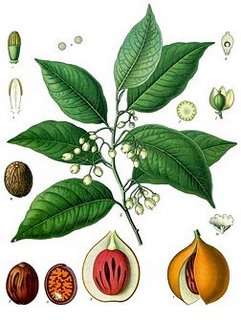As Eddie Murphy said in the movie, 48 Hours, “A badge and a gun goes a long way. … There’s a new sheriff in town.”
 That’s the impression the Obama Administration is trying to project with a spate of announcements to enhance food safety, which makes me feel it’s 1994 all over again … and look, there’s Michael Taylor back as a food safety advisor at the Food and Drug Administration (good choice, BTW).
That’s the impression the Obama Administration is trying to project with a spate of announcements to enhance food safety, which makes me feel it’s 1994 all over again … and look, there’s Michael Taylor back as a food safety advisor at the Food and Drug Administration (good choice, BTW).
For all the various announcements and endorsements today, the list of invitees to the White House is the most telling. How many food poisoners can you spot on this list, the ones who profit from selling food, have proven themselves incapable of providing safe food, and now have to ask for a babysitter?
Below is a list of expected attendees at today’s Food Safety Announcement, including representatives from consumer, industry, producer associations, public health, and academic organizations.
ADMINISTRATION OFFICIALS:
* Vice President Joe Biden
* Secretary of the Department of Health and Human Services Kathleen Sebelius
* Secretary of Agriculture Tom Vilsack
* Dr. Peggy Hamburg, Commissioner, FDA
* Dr. Joshua Sharfstein, Deputy Commissioner, FDA
* Melody Barnes, Director, Domestic Policy Council
* Dr. John Holdren, Director, Office of Science and Technology Policy
MEMBERS OF CONGRESS:
* Representative Rosa DeLauro (D-CT)
* Representative John Dingell (D-MI)
* Representative Bart Stupak (D-MI)
OTHER EXPECTED ATTENDEES INCLUDE
(in alphabetical order by last name)
* Brent Baglien, ConAgra Foods
* Andrew Bailey, National Turkey Federation
* Scott Becker, Association of Public Health Laboratories
* Georges Benjamin, American Public Health Association
* Ellen Bloom, Consumers Union
* Abigail Blunt, Kraft Foods
* Melane Boyce, Confectioners Association
* Thomas Bradshaw, American Frozen Food Institute
* David Buck, Center for Foodborne Illness, Research & Prevention
* Christine Bushway, Organic Trade Association
* Jonathan Cantu, Government Accountability Project
* Barry Carpenter, National Meat Association
* Anthony Corbo, Food and Water Watch
* Jo Ellen Deutsch- United Food & Commercial Workers International Union
* Caroline DeWaal, Center for Science in the Public Interest
* Orlo Ehart, NASDA
* Cathleen Enright, Western Growers Association
* Sandra Eskin, Georgetown University, Health Policy Institute
* Scott Faber, Grocery Manufacturers of America
* Gregory Ferrara, National Grocers Association
* Anthony Flood, International Food Information Council
* Molly Fogarty, Nestle
* Randall Gordon, National Grain and Feed Association
* Robert Green, United Egg Producers
* Sally Greenberg, National Consumers League
* Lisa Griffith, National Family Farm Coalition
* Robert Guenther, United Fresh Produce Association
* Margaret Henderson, National Fisheries Institute
* James Hodges, American Meat Institute
* Katherine Houston, Cargill, Inc.
* Jonathan James, Allen Family Foods, Inc
* Alice Johnson, ButterBall
* G. Chandler Keys, JBS
* Lonnie King, CDC
* Barbara Masters, Olsson Frank Weeda Terman Bode Matz PC
* Margaret Mellon, Union of Concerned Scientists
* Joel Newman, American Feed Industry Association
* Donna Norton, Mom’s Rising
* Erik Olson, Mars
* H. R. Bert Pena, Stinson Morrison Hecker LLP
* Robert Pestronk, National Association of County and City Health Officials
* Adam Reichardt, Association of State and Territorial Health Officials
* Tanya Roberts, Center for Foodborne Illness, Research & Prevention
* Welford Roberts, National Environmental Health Association
* Donna Rosenbaum, S.T.O.P. – Safe Tables Our Priority
* Marianne Rowden, American Association of Exporters and Importers
* Ruth Saunders, International Dairy Foods Association
* Bryan Silbermann, Produce Marketing Association
* Brian Snyder, Sustainable Agriculture Coalition
* Steven Steinhoff, Association of Food and Drug Officials
* Michael Taylor, George Washington University, School of Public Health and Health Services
* Mary Toker, General Mills, Inc.
* Omar Vargas, Pepsi-Cola North America
* Christopher Waldrop, Consumer Federation of America
* Deborah White, Food Marketing Institute
* Heather White, Environmental Working Group
* Andrea Yabulonsky, ConAgra Foods

 On Saturday, July 4, 2009, more than 40 police officers in Birmingham, U.K.
On Saturday, July 4, 2009, more than 40 police officers in Birmingham, U.K. Saha was making an inspection of the hostel’s kitchen after 63 students, who had taken lunch there on Saturday, underwent treatment for food poisoning at Bagerhat Sadar Hospital.
Saha was making an inspection of the hostel’s kitchen after 63 students, who had taken lunch there on Saturday, underwent treatment for food poisoning at Bagerhat Sadar Hospital. Yesterday on Days of Our Lives, Kate tried to poison Daniel and Chloe with an undetectable substance that she put on a tray of deviled eggs. When she caught her son, Lucas, trying to snatch an egg, she freaked out.
Yesterday on Days of Our Lives, Kate tried to poison Daniel and Chloe with an undetectable substance that she put on a tray of deviled eggs. When she caught her son, Lucas, trying to snatch an egg, she freaked out. 

.jpg) The Daily Telegraph reports
The Daily Telegraph reports By March 3, 2009,
By March 3, 2009, .jpg) Today the Fat Duck remains closed. The number of sick is now estimated at 400.
Today the Fat Duck remains closed. The number of sick is now estimated at 400.  Matmagasinet’s chief editor Ulla Cocke
Matmagasinet’s chief editor Ulla Cocke 

